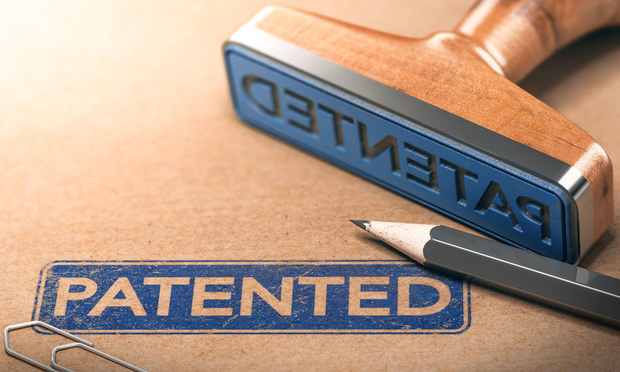Features

Copyrights Battles and the Downfall of EU AI Act
While the EU AI Act certainly deserves compliments for both its pioneering nature and numerous thoughtful provisions aimed at the efficient and effective regulation of modern AI, it is not without its drawbacks.
Columns & Departments

IP News
Federal Circuit: District Court Did Not Err In Declining to Find Infringement By Moderna’s Activities Involving COVID-19 VaccineFederal Circuit: PTAB Did Not Err In Finding that Prior Art Reference Disclosed Negative Limitation Without Stating a Feature’s Absence
Features

Meta Gets Victory In Significant AI Copyright Case, But Ruling Limited
A federal judge handed Meta a major win on June 24 in a closely watched copyright case over its use of books to train large language models, but the ruling stopped well short of giving tech companies blanket protection to scrape creative works for artificial intelligence.
Features

Three Key Considerations for Trade Secret Owners Seeking Protection Under the Texas Uniform Trade Secrets Act
In today’s competitive marketplace, a company’s most valuable assets are often not found on its balance sheet. The proprietary formulas, customer databases, pricing models, and operational processes that give businesses their competitive edge represent intellectual capital that can literally be worth millions — or lost in an instant. As innovation drives business success, protecting these trade secrets has become critical to maintaining market position and profitability.
Features

The Suspension Bridge Effect: Why Trademark Attorneys Must Protect Entire Brand Systems, Not Just Individual Marks
In brand protection, as in bridge engineering, the strength of brand differentiation (trademark distinctiveness) depends on the integrity of each supporting cable. When one snaps, the question is not only whether you can fix that component, but also whether the whole structure will hold together long enough for the repair crew to arrive.
Features

Leveraging Patent Office Examples for AI Enabled Innovation In Any Industry
In Ex parte Michalek, the PTAB evaluated an invention involving medical health technology and artificial intelligence. While this case involved medical health technology, the implicated issues inform patent strategies for AI enabled inventions across all industries.
Features

Protecting Your Patent: How a Vet-Owned AI Company Safeguarded Its IP
Military-owned businesses often possess unique technological advantages derived from years of research, development, and practical application. One veteran-owned company’s journey — combined with a patent attorney’s experience preparing and filing patent applications — provides valuable insight into what veterans should do to safeguard their intellectual property.
Columns & Departments

IP News
In a recent decision, the U.S. Court of Appeals for the Second Circuit addressed application and analysis of the fair use doctrine under copyright law, and reversed the district court’s finding of fair use. In an unusual situation, the lower court had dismissed the complaint sua sponte, although the defendant’s time to respond to the complaint had expired.
Features

Divided Over Damages: Courts Split On Whether Failure to Mark Precludes All, or Only Some, Pre-Suit Damages
Only a few district courts have addressed the failure to mark in recent years — but they’ve reached directly opposing conclusions. This article analyzes the conflicting authorities and their reasoning, and it provides guidance to litigants on best practices given the conflict between district courts.
Features

Tea Leaves Tell Tales: Jury Awards $2.36 Million for Bigelow’s “Manufactured in the USA 100%” Label
On April 8, a California jury found that R.C. Bigelow, Inc., the well-known manufacturer of Bigelow teas, intentionally or recklessly misled consumers by claiming that some of its teabags were “Manufactured in the USA.” The price for this mislabeling was steep, with the jury awarding the class action plaintiffs $2.36 million.
Need Help?
- Prefer an IP authenticated environment? Request a transition or call 800-756-8993.
- Need other assistance? email Customer Service or call 1-877-256-2472.
MOST POPULAR STORIES
- Use of Deferred Prosecution Agreements In White Collar InvestigationsThis article discusses the practical and policy reasons for the use of DPAs and NPAs in white-collar criminal investigations, and considers the NDAA's new reporting provision and its relationship with other efforts to enhance transparency in DOJ decision-making.Read More ›
- The DOJ's Corporate Enforcement Policy: One Year LaterThe DOJ's Criminal Division issued three declinations since the issuance of the revised CEP a year ago. Review of these cases gives insight into DOJ's implementation of the new policy in practice.Read More ›
- The DOJ's New Parameters for Evaluating Corporate Compliance ProgramsThe parameters set forth in the DOJ's memorandum have implications not only for the government's evaluation of compliance programs in the context of criminal charging decisions, but also for how defense counsel structure their conference-room advocacy seeking declinations or lesser sanctions in both criminal and civil investigations.Read More ›
- Don't Sleep On Prohibitions on the Assignability of LeasesAttorneys advising commercial tenants on commercial lease documents should not sleep on prohibitions or other limitations on their client's rights to assign or transfer their interests in the leasehold estate. Assignment and transfer provisions are just as important as the base rent or any default clauses, especially in the era where tenants are searching for increased flexibility to maneuver in the hybrid working environment where the future of in-person use of real estate remains unclear.Read More ›
- Developments in Distressed LendingRecently, in two separate cases, secured lenders have received, as part of their adequate protection package, the right to obtain principal paydowns during a bankruptcy case.Read More ›
